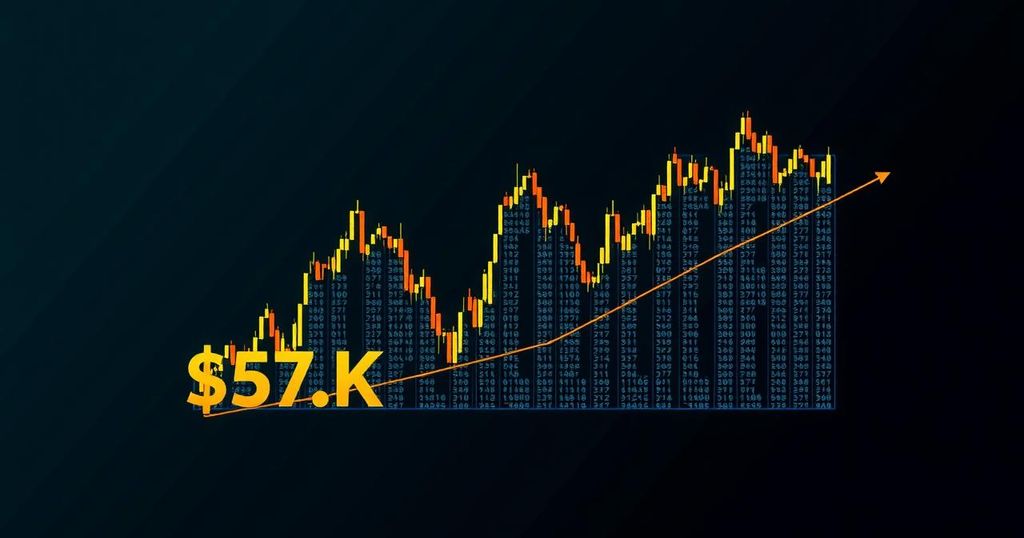Current Market Analysis: Bitcoin’s Status and Trader Sentiment Amidst Volatility
The current trading price of Bitcoin falls below $57,000; however, data indicates that professional traders maintain a non-bearish outlook. Recent analyses have led some to speculate that the bull market for Bitcoin has concluded following its apex at $73,757 nearly six months prior. Conversely, other traders characterize the observed 30% price correction as ordinary market behavior.
Historical price movements suggest that Bitcoin typically experiences post-halving bull markets approximately five to six months following the event. Complicating current market conditions are uncertainties surrounding the forthcoming U.S. presidential election and potential shifts in U.S. central bank monetary policy, both of which contribute to elevated volatility.
Educator Armando Pantoja emphasizes that Bitcoin often begins to rally roughly 10 months after a rise in the money supply. Correspondingly, the U.S. M2 money supply has shown expansion since February 2024, implying that increased liquidity could positively influence Bitcoin’s pricing by December if historical patterns persist.
Despite uncertainties surrounding the financial landscape, metrics from derivatives markets depict a less reactive stance among traders regarding price fluctuations. Prior to the crash on August 5, market participants displayed excessive optimism regarding Bitcoin’s price movement as evidenced by futures market data. The decline below $55,000 triggered a series of liquidations, ultimately reaching $50,000.
At present, the Bitcoin futures premium stands at 6%, nearing the lower edge of the neutral range defined between 5% and 10%. In periods of heightened market enthusiasm, there is typically great demand for leveraged long positions, reflected in futures trading at premiums exceeding 10% compared to conventional Bitcoin spot markets. Notably, the futures premium has remained stable from the previous week, signifying a constant demand for bearish positions has not emerged.
To ascertain if this sentiment is exclusive to the futures domain, it is essential to also examine Bitcoin options. The 25% delta skew, reflecting the disparity in premiums between call and put options, remains neutral at 3% despite a 6% drop in Bitcoin’s price over the last week. An increase in delta skew generally indicates anticipations of a severe price correction by larger market players, reinforcing the neutral sentiment observed in the futures market.
The impact of U.S. labor market statistics will be crucial for Bitcoin’s immediate performance. A recent report from the ADP National Employment Report revealed that 99,000 jobs were added in August, notably below projections and lower than the previous month’s growth. A sluggish job market may complicate the U.S. Federal Reserve’s objectives for a “soft landing,” aimed at interest rate reductions without triggering a recession.
Furthermore, investors may exercise caution in establishing new positions as they await the U.S. payroll data due on September 10. According to analysis from Yahoo Finance, a lackluster jobs report could exacerbate market concerns, inducing additional selling pressure. In contrast, a flight-to-quality tendency typically favors assets like gold and short-term government bonds, posing further challenges to Bitcoin’s value.
Currently, there are no discernible signals suggesting a shift to bearish sentiment among Bitcoin traders, even amidst $804 million in outflows from spot Bitcoin exchange-traded funds (ETFs) over the past week. Consequently, the resilience observed in Bitcoin derivatives suggests traders are content with the current marker of $56,000, while signaling that bearish traders display reluctance in betting on further price declines.








Post Comment